



Interview by Ruth Catlow
Transcribed by Anna Monkman
Ingrid LaFleur is on a mission to ensure “equal distribution of the future”. The curator of Manifest Destiny in Detroit, she also recently stood for mayor with an Afrofuturist manifesto.
Detroit has long played a critical role in the history of ‘domestic and global labor struggles.’
And now its quest for social justice has an avant-entrepreneurial dynamic, working across art, politics and technology. Activists respond to the city’s (often highly racialised) political failures to provide basic utilities with impressive social innovation. The recent boot-strapping community mesh networks for instance, was a response to the fact that 40 percent of Detroit residents have no access to the Internet at all. The alliances and networks formed in this project are now providing the social grounding for peer-to-peer technical education and experimentation with emerging decentralisation technologies. DACTROIT (an EOS project) is now exploring how payment for this infrastructure might be made through a community token.
I first interviewed LaFleur in July shortly before Detroit Art Week and the opening of Manifest Destiny at Library Street Collective Gallery.
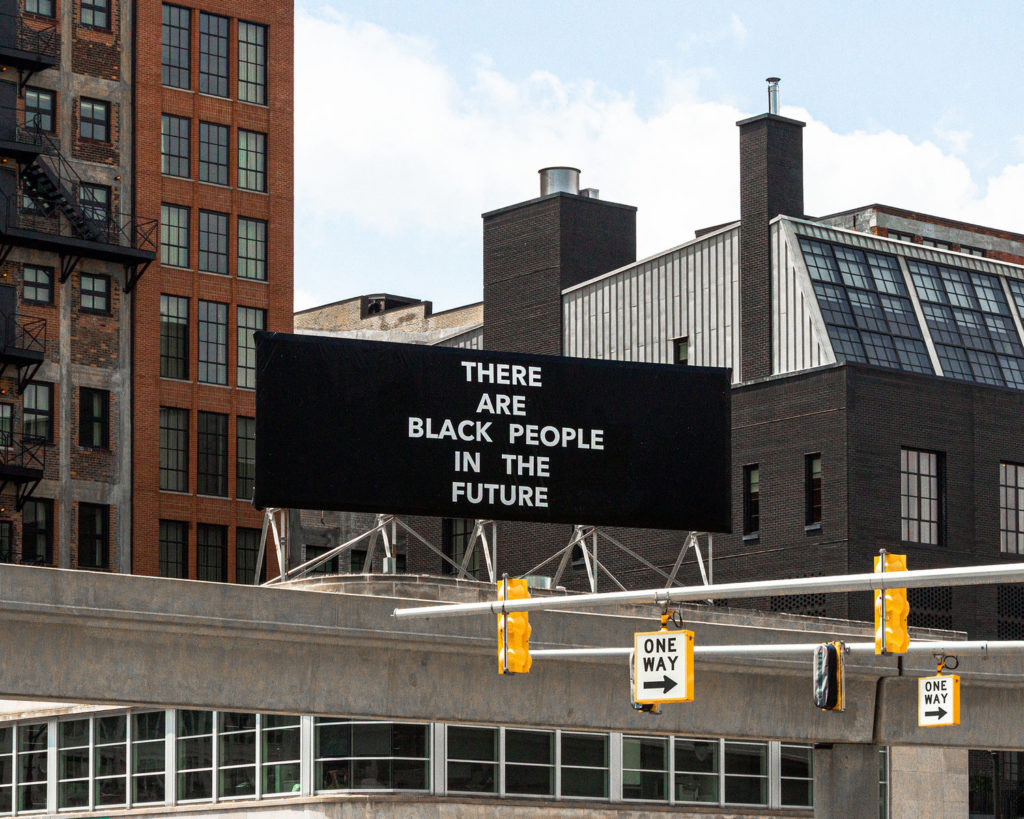
Ruth Catlow: I have wanted to talk with you for a while about your current curatorial work. But first I think it’s worth noting that we share a number of unusual preoccupations. We are both inspired by the social justice sci-fi of Octavia E Butler; we root our work in locality; and have experimented with blockchain technologies as a site for artistic experimentation and social change. I have not however, stood for mayor. You have, and we will come to that later.
Please can you start by telling us about your exhibition Manifest Destiny.
Ingrid LaFleur: I only curate once every two or three years, almost like a museum curator. Manifest Destiny is a culmination of things that I have been thinking about for a while. Working across art and blockchain technology I’ve been very action-oriented thinking about what we need to be implementing, learning, adapting, innovating, in order to basically get free – that’s the whole point of my work.
I’m constantly trying to figure out how Black bodies can be free, which means I really need everyone to be free. And so I’m constantly unpacking, dissecting Afrofuturism as a framework or launchpad. I’m working to see what I’m missing, where are the gaps and how can I fill them in so that we can then make pathways forward and develop the futures that we really want to see. The exhibition title comes from this work.
I wanted to look at this in an abstract way. For instance, the painting series by Satch Hoyt, The Course of Stars of the Sirius System, are illustrating the star Sirius constellation, ground us in an ancient history which I think is very important as we plan and create these processes for manifestation. Satch Hoyt’s painting, Afro-Sonic Map (Black Mapping), is looking at how sound has been cultivated and informed by the different places through which it has travelled. And I’m pulling this interpretation out, because I believe that as we are imagining our destinies we have to be grounded in ancestral wisdom and Afro-Sonic Map (Black Mapping) reminds us of that ancestor from which the sounds are coming… But how they’ve also been wonderfully altered and transformed as a result of coming in contact with different realities – meaning that different times and history have informed the music, have informed how we are communicating sonically.
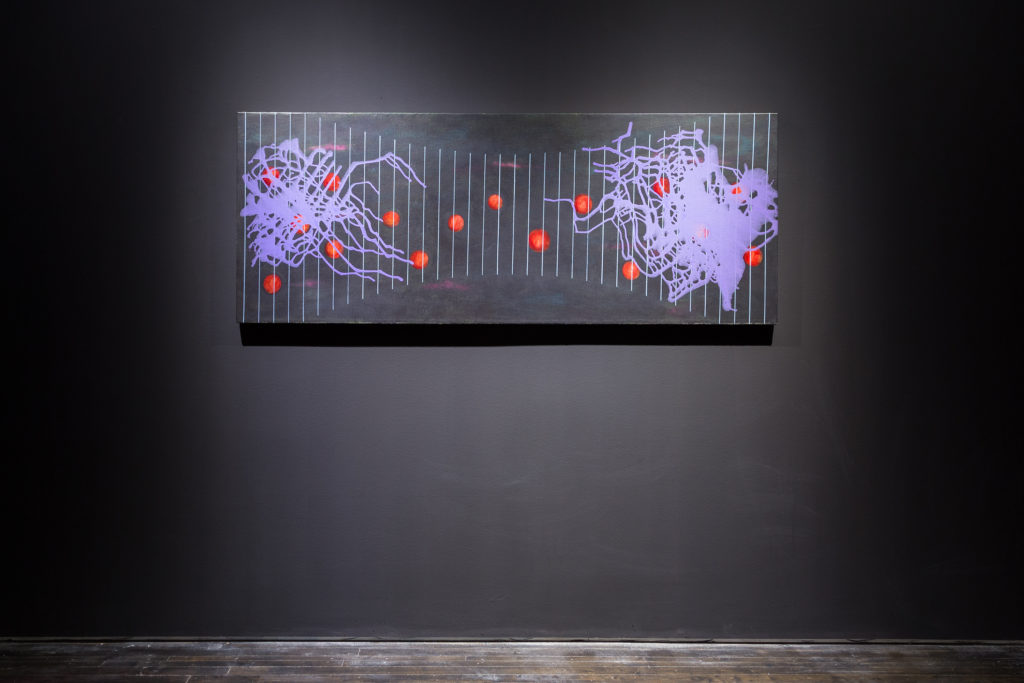
So this is a type of time travel, but it is not just time, it is realities, places and environments and all of these things that inform the work and how there is still always this thread that can always lead back to the original.
And in speaking of the original, the exhibition begins with an Afrofuturist boutique called DINKINESH. I created it because I really wanted to be able to provide items that were affordable and Afrofuturistic. One of the issues that I am having especially when it comes to Afrofuturist imagery is that it is very digital. I am here to bring it out into a physical space and make it both portable and affordable so then people can have it in their homes, place of work, wherever in the physical realm. The whole purpose of Afrofuturism is to shift consciousness and so I want it to be as available as possible. DINKINESH means “you are marvelous” and it is the name that was given to the oldest human remains found thus far, and they were found in Ethiopia. So this store is greeting you, it’s welcoming you into this space, but it’s also a gentle reminder that we all come from this one woman who is in, what we call now, Africa. And we are united by her. So DINKINESH initially will have this Afrofuturistic focus but over time it will grow to include Chicanofuturism and Indofuturism and all the futurisms of Black bodied and Brown bodied people. I am working on the boutique with Utē Petit who is based in New Orleans but from Detroit. He is designing the space and he is using imagery of flora from the Ethiopian region where Dinkinesh was found. The flora has been woven into the wallpaper for the space, so that is really exciting. I am very excited about DINKINESH.
RC: So people will be able to buy Afrofuturist art in the boutique.
ILF: Yes, like digital prints
RC: And will they be buying work that relates to work across the whole show?
ILF: Not really. Some of the artists will have products in the store like zines, hand-printed bags, but they were curated separately from the exhibition.
RC: This is work produced by just one artist or a group of people?
ILF: It’s literally like a retail store so it is work by a lot of different people. It’s like a museum store so it’s a lot of different people from all over. I am basically trying to gather it all together into one space. We don’t currently have one physical store to go and buy Afrofuturist anything.
RC: Wow! How have you sourced all of this? Is it all Afrofuturist art?
IF: Yeah, it’s a combination of people that I have been following online, or different groups that I have heard about, some of my friends might have items that I like, I know some of the artists personally, so it’s a variety of things. It is great, it is exciting, and slightly overwhelming- because it will keep going. To live on, beyond this exhibition.
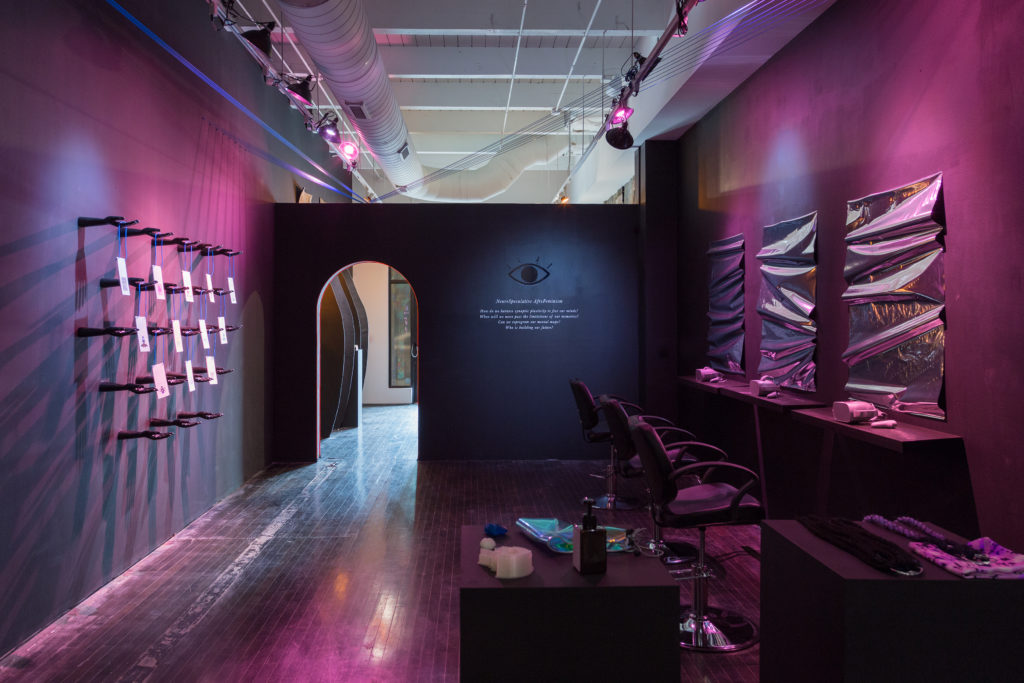
RC: How will it live on afterwards?
ILF: We’re going to be popping up in different places, I can’t announce it yet. I imagine that each place will offer different kinds of experiences. There will be some augmented reality involved in this iteration. I want to grow that, and expand into virtual reality experiences.
RC: I can see why that would be a bit daunting, because if it’s a boutique and people will be buying things it means you will need to keep it stocked.
ILF: It’s a real store!
RC: And are you selling things on the blockchain?
ILF: That might become complicated. But eventually I do want to accept crypto once I find a point of sale system I feel comfortable with. But first, right now, I just need to understand what it means to have a retail space.
RC: To come back to Manifest Destiny, Can you tell us a little bit about the title of the exhibition? What’s the context and significance of Manifest Destiny as a phrase or as a name?
ILF: I am looking at what does it take to manifest one’s destiny. So as I mentioned before, the guidance of ancestral wisdom is really important, otherwise the possibilities of the past become inaccessible in the present. I’ve also learned, as we move into working with new technologies like blockchain, and the philosophies that are behind it, and becoming more familiar with the tech industry in general, how important it is that the planning phase should be a heart-led process. We can see how a person’s perspective is really going to affect the tech and how it interacts with the world and so I’ve become very sensitive to how we’re planning and approaching a thing in order to manifest it.
And then finally there are the tools to make the physical thing and that’s when I get really excited. Implementation.
RC: OK So can you talk me through the exhibition?
ILF: Yes, so it starts off with DINKINESH. Then it goes into Hyphen Labs’s NeuroSpeculative AfroFeminism project which recreates a Black hair salon where you are getting your brain optimised. This is like that beginning process. And I think of the optimisation process as a way of decolonising because you don’t want to plan something that is a result of a colonised, limiting, narrow kind of perspective that is really based on someone else’s agenda. So you want to clear that and clean that up. Then Satch Hoyt’s beautiful paintings, Afro-Sonic Map (Black Mapping) and The Course of the Stars of the Sirius System. These give a reminder of the foundation of histories and ancient ancestral lineage. Then Alisha B. Wormsley created this really wonderful installation that is connecting the two gallery spaces. We also have her billboard that is placed outside of the gallery space above a bar right by public transportation, that says ‘There Are Black People In The Future’. I’m really excited about that because downtown Detroit has become 90% white even though the city is 85% Black so it’s like a little colony. The billboard is disrupting that space.

In the second gallery we have Maikoiyo Alley-Barnes has created a black and white film called Sacred, which is accompanied by a gorgeous sound that creates an ethereal multi-reality. Sacred is hard to talk about without giving away the mystery that’s embedded in it, but the thing that is sacred, you come to understand is sacred to us all. He has also created two sculptures that expresses the continuum that is necessary for the evolution of the future. And then there is Jasmine Murrell who created a collage tapestry, one of them titled Walking Time Travelers: Future will remind you of what is most important, what was lost, what was stolen, and what can never be replaced. Jasmine also created a deconstructed sculptures of hands that are coming through from a different reality.
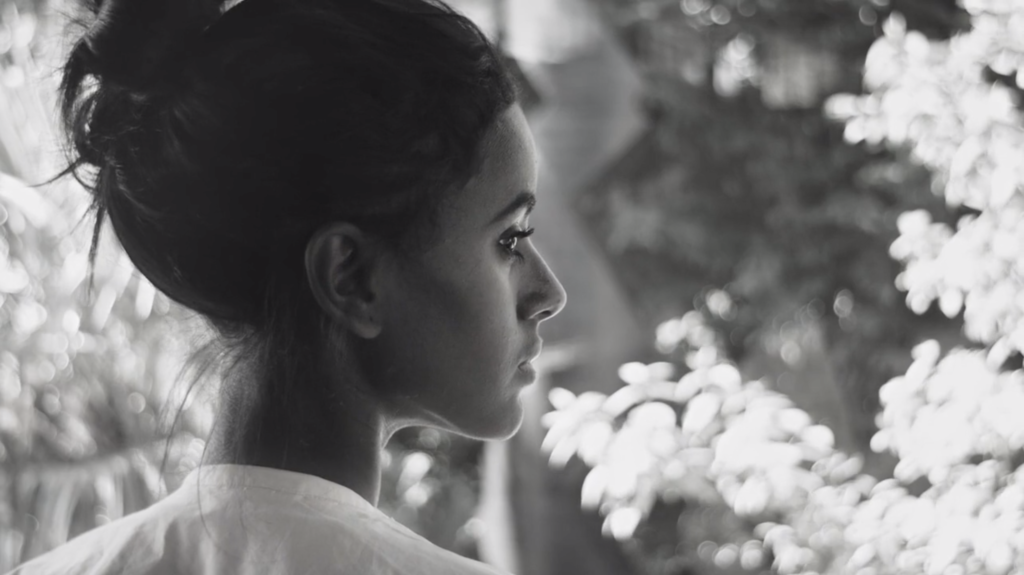
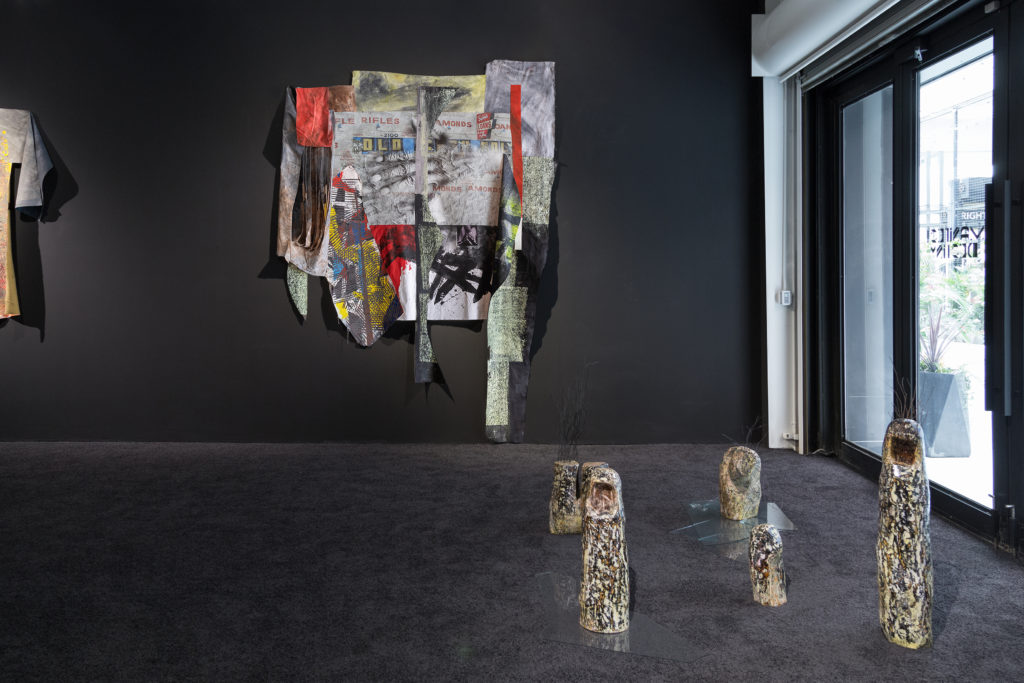
That second gallery space opens up to an alleyway that has been fully renovated where there are clubs and restaurants and bars and all types of artwork, there will be five very large panels that will have augmented reality artwork. This work is coming from the Digitalia exhibition that was shown in San Francisco at the Museum of the African Diaspora, MoAD. I was such a fan of the exhibit that I invited Lady PheOnix who is the curator of Digitalia to travel a portion of the exhibition to Detroit. I was able to choose some images from that exhibition that is on display in the alleyway called The Belt. It will be up for a year. I’m very excited about this because not everybody is going to walk into the gallery space so this is a way of making the afrofuture a little more public, also because augmented reality is participatory it’s a fun activity that everyone can enjoy. For many this will be their first introduction to AR.
The last component of Manifest Destiny is the skills training through a series of workshops. The workshop programme includes a talk by Rasheedah Phillips who is known for her theoretical work on quantum futurism. The Black School reimagines the art school into a Black art school taught participants about ancient architectural techniques and fractals and then as a group built a pyramid. Creative technologist Onyx Ashanti held a 3-D printing workshop. And I gave a workshop on decentralizing power and new economies. The programme ends with DC comics writer Tony Patrick who led us into a worldbuild session over three days. We developed a vision for Detroit in 2040 that will become a comic and eventually a virtual reality experience.
RC: It sounds just amazing! Like there are a lot of different ways in for different kinds of people. How much do you think or care about who this is for and how they find out about it, and also what their experience of it is.
ILF: This show is literally for Detroiters. I am constantly thinking about the exhibitions, the materials, the exposure, making sure that Detroiters have exposure to what is happening in the entire world and I really don’t care if you have never been to a museum or if you go all the time. Most of my work has been directed towards people who might be in-between. They like art and are curious but maybe they are not going to gallery exhibitions all the time or following museum shows. I am very much aware that the gallery space is on the alleyway, The Belt, which is party central for downtown, day and night in the summer. What I love is part of the exhibition in the gallery is visible in The Belt because one of the walls is all window. Downtown attracts all kinds of people, definitely people who have probably not experienced as much artwork by Black artists in their life and who might be a little afraid of Black bodies and hopefully they can develop a new relationship based on this show.
I’m very clear with artists about where they are showing, the politics of what’s going on and who’s going to come through those doors, because some artists might be sensitive to this. Some artists might want to engage in a very particular way as a result. One artist wanted to do something a little more artistic that would work in MOMA, and I was there with him, I got it, but I was like, I just want you to understand that the people who are going to come through these doors have been day drinking. They are going to be in shorts and flip flops, like ‘oh this looks cool’ and ‘oh this is great’ and within minutes they are gone. To help ease people into the space I asked for black carpeting on the floor because I want people to pause when they enter, I want the hushness when you come in so you are a little more reflective. This did happen but also what I did not expect is how people then felt comfortable to sit and chat on the carpeted floor. That warmed my heart. I love when a traditionally austre space becomes an inviting one.
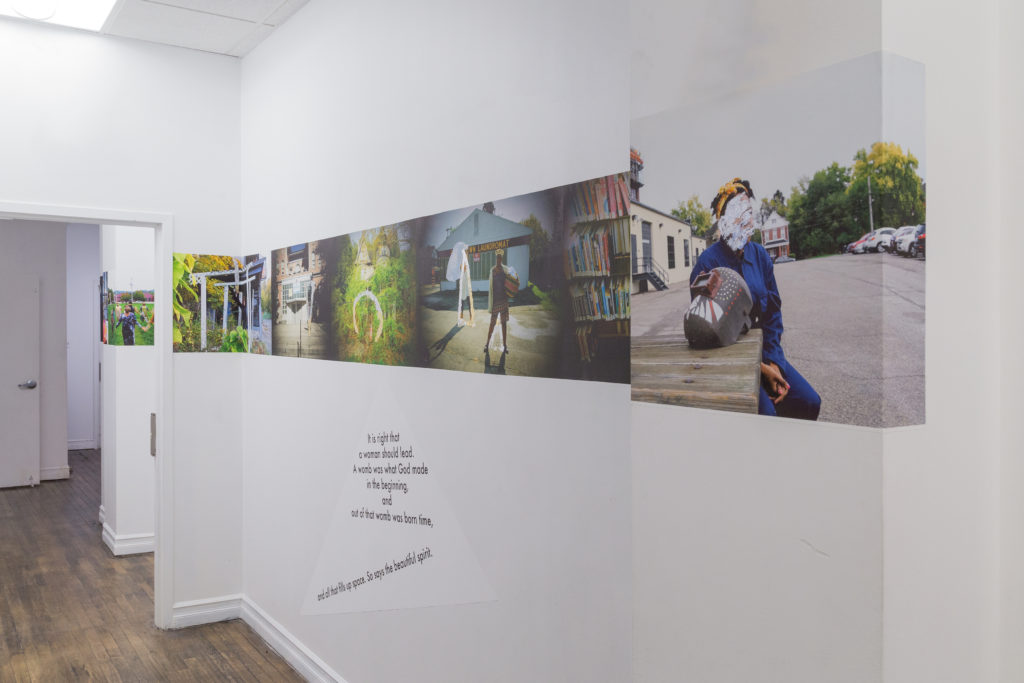
RC: So we run a gallery in the heart of a public park in North London, so we also get the day drinkers, and we also welcome the day drinkers! So it’s interesting to hear you talk about this.
RC: Given that Furtherfield has a readership from all over the world, I imagine that many people will not really have a sense of Detroit. So it would be great to hear you talk about why it’s important to you that this is happening in Detroit. And why Detroit?
ILF: Detroit is going through a major transformation, and some of us are in the midst of it, some of us are making it happen, and then some of us are running behind watching it happen and trying to figure out where we fit in. There is really no reason to leave anyone behind. It’s a critical moment because we are getting an influx of white people moving into a majority Black city. White people in the United States of America are not used to being minorities. Being a minority in their minds mean they have less power. It seems like they are saying to themselves, ‘I’m not used to being the only white person in a room so I’m going to stick with all the gentrified places where I remain majority in the room and I feel safer, more comfortable’. But what that means is that they are still not confronting their fear of Black people so it’s like they’ve decided to live in a tiny hut in a big forest and won’t explore the forest even though it offers new insights and experiences. And it’s ok if that’s what they really want, but then don’t stare or become hostile because Black people have entered a space.
My presence as a Black person can be very disruptive in these spaces, it’s like people forget that they are in a majority Black city. Nobody really cares when there are white people walking into a majority Black bar. The reason we don’t care is because we are in our safe space so a white person coming in is like [shrugs]. But when a Black person enters a majority white space a mixed bag perspectives awaits–a sprinkling of Trump supporters or a sprinkling of racists. A Black person has to figure it out in real-time constantly, whereas a white person coming into a Black space we are just like, ‘do you want a drink?’ It’s not like ‘Where are you from?’, ‘Why are you here?’. We don’t have it in us to do all the microaggressions that white people do and I really think it’s the lack of understanding Black people and culture that has caused a lot of harm. Also, the constant reinforcing of whites to separate themselves from people just because of the color of their skin, it’s dehumanising, causing a level of fear and depression that then becomes violent.
This exhibition is my way of confronting the anti-Blackness and making people face their fears, see it and think about it. What does it mean? Why is there a sign that says ‘There Are Black People In The Future’? Why is it even necessary to say that? What does that make me feel? What does that make me see in the future? And then it makes you question, how was I imagining the future? Did I imagine Black people there? Was I just imagining me and my people? It’s very much confrontational but in a very loving way and that’s why I put DINKINESH, our mother at the beginning.
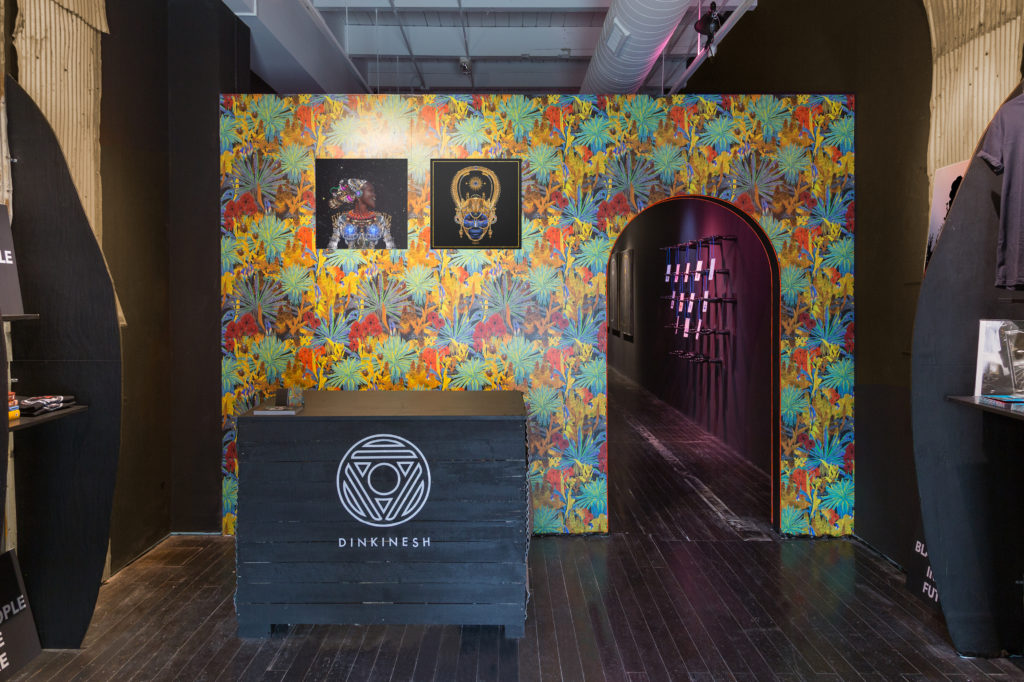
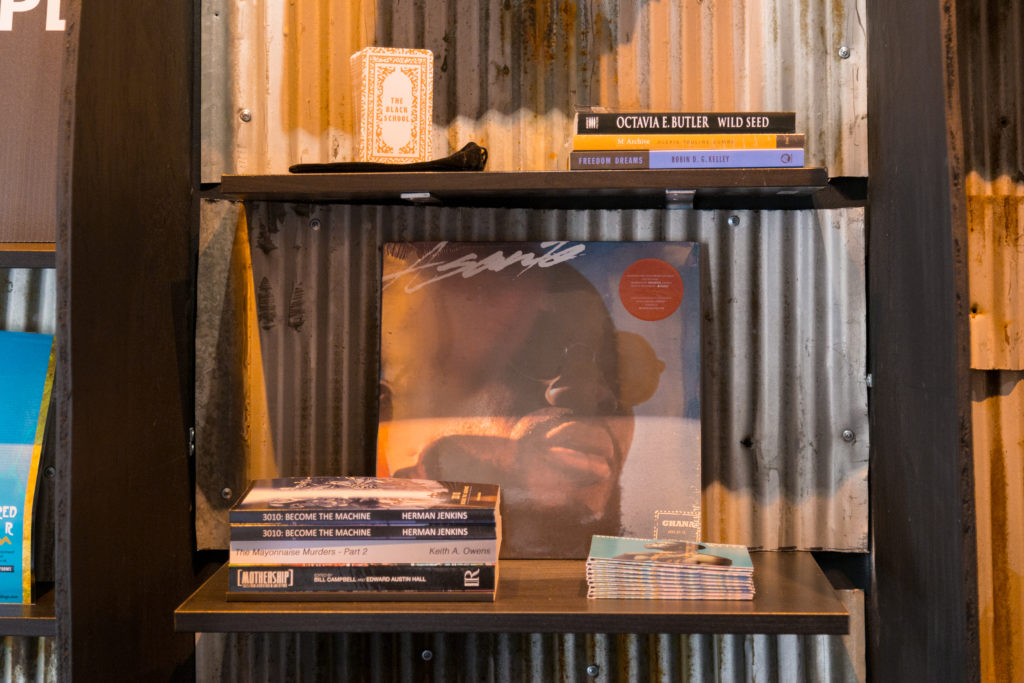
RC: You talk about confrontation but you are also confronting the fear. So you are recognising what’s at play not just at the surface, but on many levels here.
ILF: Exactly. You cannot heal that which you do not acknowledge exists, so I need people to confront the fact that the fear exists somewhere, subconsciously, in your DNA, your heart. Once the fear is acknowledged, the healing begins and then liberation is close. But the problem in the United States is that whites don’t have to confront their fears. But what is misunderstood is how by not confronting fear they are limiting their own life, and they are denying themselves access to humanity.
RC: The first time I met you was at The Gray Area festival when you were talking about running as mayor with an Afrofuturist manifesto. I love that I can now wrap up this interview with a question about your political career!
ILF: Yes! I was the first political candidate to use Afrofuturism as a framework in a mayoral campaign. It was very much of a process to understand what it means to be an Afrofuturist within a political sphere because it had never happened before.
RC: And we should also look for the connection between your work with Decentralised Detroit and your curation of Manifest Destiny?
ILF: As I stated before, I have been in a space of action and because I am an impatient person and I would love to see everyone liberated and happy in my utopia while I am alive, I began investigating ways to tackle the poverty issue in Detroit. It was after I proposed a universal basic income using a cryptocurrency Detroit would create that I began exploring how cryptocurrency and blockchain technology allows for the development of new economies and ways to make money but how it is a tool allowing for efficiency when creating and building with people. Anybody who has worked in groups understands we need as much organization as possible so as a result of working with blockchain technology I’ve come to learn about decentralised autonomous communities and that’s when I become really excited. This is my Afrofuturist self trying to figure out what are the obstacles that Black bodies face in imagining futures, new futures, decolonised futures, futures of their own making from the desire of their own heart, not because of someone else’s agenda or brainwashing.
There are a lot of obstacles but I’ve come naturally and organically to a point where I decided to focus on economics. And so economic justice has been my centre point for a couple of years now. By really attending to the racial wealth gap (it would take the average Black American family approximately 228 years to accrue the wealth of the average white American family), we will then be able to see people have more control over their lives and the neighborhoods they live in. Now we have a pathway for growing wealth, which was something that was denied to Black Americans for over 400 years and continues today.
For me everything is always related, all of it, the art, the blockchain, everything. I am trying to attend to the mind, body, and soul, all at the same time. It is hard for me to focus on just one pathway towards liberation. I like to understand and be involved in multiple pathways to freedom. That’s what keeps me exploring, curating, teaching, lecturing and creating workshops.
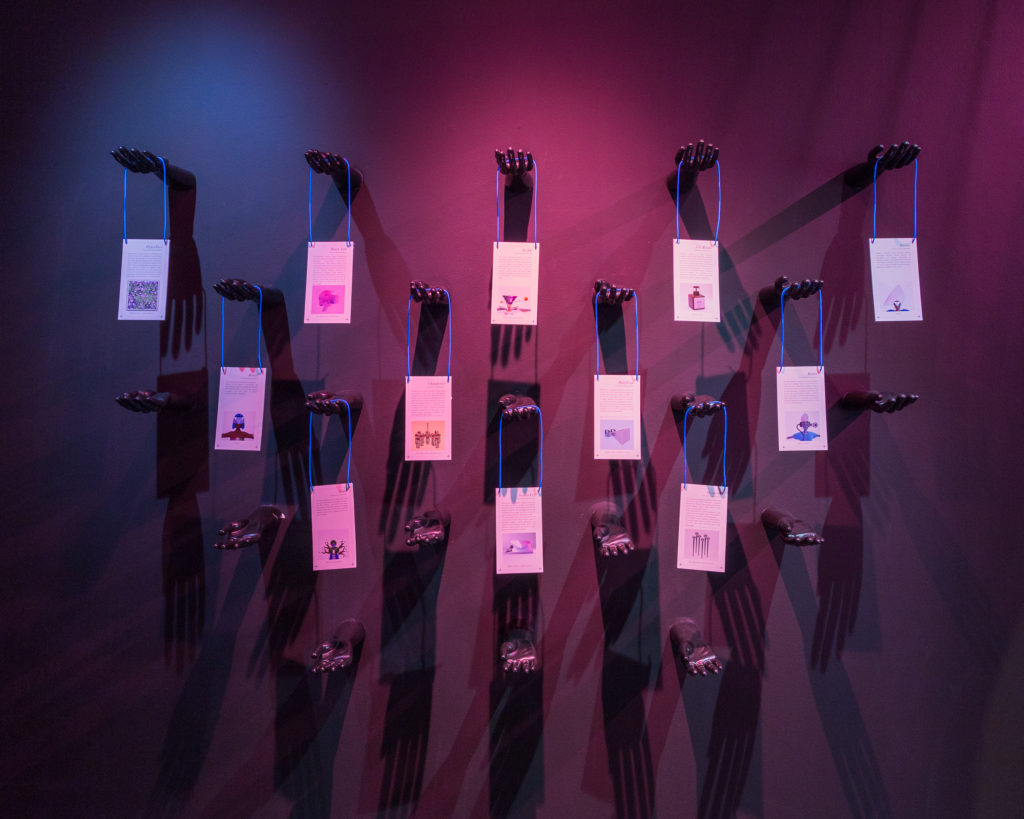
Manifest Destiny, is curated by Ingrid LaFleur. It is now on view at the Library Street Collective Gallery until 5 October 2019
Curator, pleasure activist and Afrofuturist. Her mission is to ensure equal distribution of the future, exploring the frontiers of social justice through new technologies, economies and modes of government. As a recent Detroit Mayoral candidate and founder and director of AFROTOPIA, LaFleur implements Afrofuturist strategies to empower Black bodies and oppressed communities through frameworks such as blockchain and universal basic income. Ingrid LaFleur is currently the Director of Social Impact for Detroit Blockchain Center and curator of Manifest Destiny currently taking place at Library Street Collective in Detroit.
DOWNLOAD PRESS RELEASE
DOWNLOAD GALLERY HANDOUT
SEE IMAGES FROM THE PRIVATE VIEW
In his first solo show in the UK, pioneering media artist Eduardo Kac puts poetry into space in entirely new ways and prompts us to ask “How do words work? What happens if we look at them upside down or inside out? What kind of poem could be made by an astronaut in outer space? What has poetry got to do with green bunnies?”
Kac explores how digital and other technologies provide poets with new possibilities of sound, light and movement. Even space flight offers the poet opportunities. Kac moves the poem off the page and into action. He explores the poetic possibilities of technologies ranging from digital videos and holograms to DNA manipulation and space flight, liberating poetry from the constraints of the printed page.
You can experience poems by Kac in the three rooms of Furtherfield Gallery as well as outside in the park. Follow the rabbit-shaped drawings on the paths in the park to see Poetry for Animals, Machines and Aliens in Furtherfield Gallery and installed in the field nearby.
Kac’s most famous work is GFP Bunny (2000), in which a rabbit called Alba was created in a laboratory with a gene causing her to glow fluorescent green under blue light. The artist made The Alba Flag (2001), on the outside of the Gallery next to the entrance, to celebrate Alba. Kac’s work with Alba prompted him to create a wordless language called lagoglyphs that give new expression to the bunny.
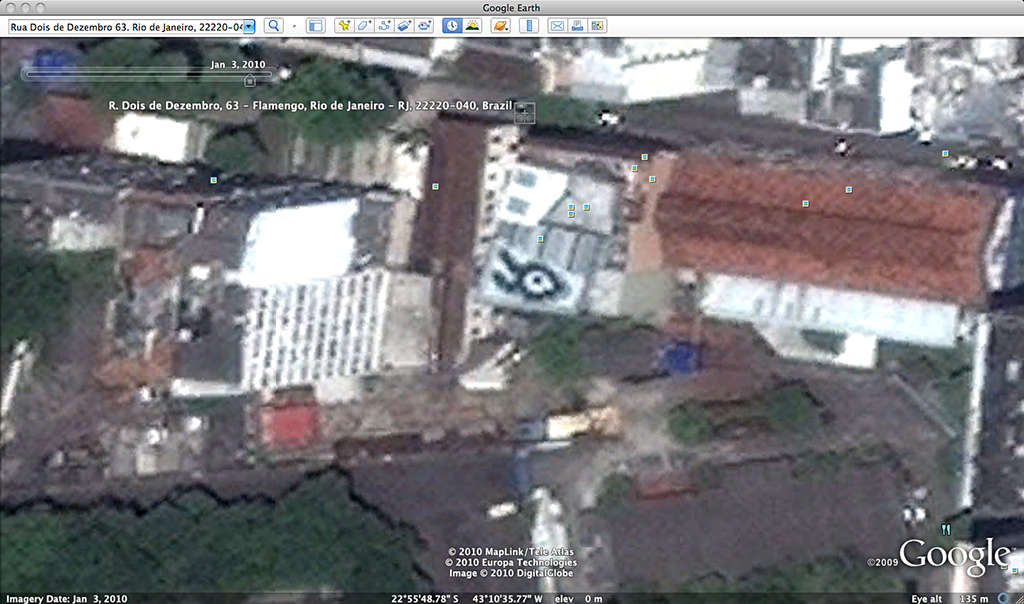
One of the highlights of the exhibition is Kac’s Lagoogleglyph, a work made for viewing from space. Covering a field in Finsbury Park it is optimised by Kac for viewing through satellite imagery and visible in Google Earth. The Lagoogleglyph is part of a series which forms a globally distributed artwork visible only from space. Earlier Lagoogleglyphs were installed at Oi Futuro, Rio de Janeiro, Brazil (in 2009) and Es Baluard Museum of Modern and Contemporary Art, Palma de Mallorca, Spain (in 2015).
Also featured in the exhibition:
In Adhuc (1991), holography alters our behaviour as readers. You cannot read the poem left to right. You must dance a little in front of it. As you do this, letters and words shift, drift away and colours change.
Inner Telescope (2017), performed by the French astronaut Thomas Pesquet in the International Space Station, is poetry for zero gravity. The form has neither top nor bottom, front or back, left or right. Sometimes it looks like the French word MOI (me). At other times, it looks like a human figure with the umbilical cord cut. It is the first poem to be made in outer space.
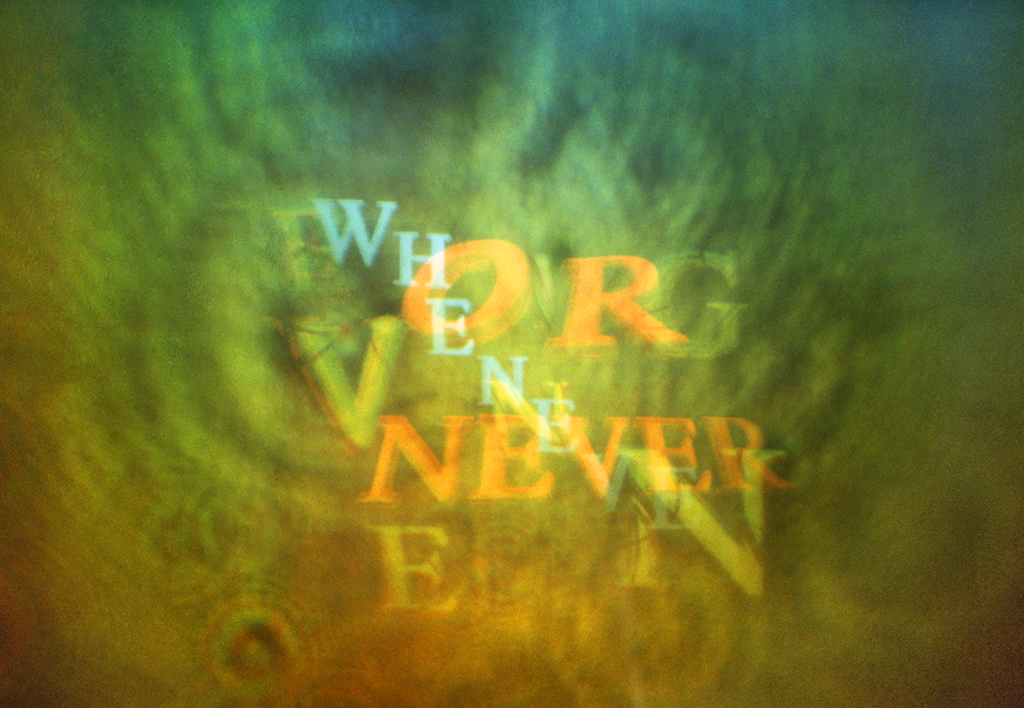
Let’s Fill this Park with Rabbits!
Free family Workshops
Sat 7 April, Sun 22 April & Mon 7 May, 11am – 4.30pm
Furtherfield Gallery
Families and groups of all ages are invited to join artist Michael Szpakowski to design their own giant rabbits and draw them on Finsbury Park by walking your own rabbit route using GPS software. Just turn up on the day to book a place for your group – workshop places will be offered on a first-come first-served basis on each day. Groups and families can also just turn up on each day to join in with the fun and walk some bunny routes in the park.
FREE
Arts and Humanities Research Council Digital Transformations Workshops
Inspired by and building on the Kac exhibition, these workshops will draw together themes and issues which have emerged from the AHRC thematic research programmes including Translating Cultures, Science in Culture, Care for the Future and Connected Communities.
More info
Digital Transformations and Community Engagement
18 April 2018, 10.30am – 4pm
Furtherfield Commons
How can we promote collaboration between communities and academic researchers? Do digital methods help create community engagement?
FREE | booking essential
Reconnecting Artistic Practice and Humanities Research
25 April 2018, 10.30am – 4pm
Furtherfield Commons
Can a renewed dialogue between humanities scholars and artistic practice provide innovative perspectives to confront current social and cultural challenges?
FREE | booking essential
Language and Diversity
8 May 2018, 10.30am – 4pm
Furtherfield Commons
Exploring the role of language and translation in promoting understanding and communication within, between, and across diverse cultures.
FREE | booking essential
Science in Culture
23 May 2018, 10.30am – 4pm
Furtherfield Commons
How can art engage with science and technology? And how can art explore the role of science in culture?
FREE | booking essential
Further Eduardo Kac exhibitions are being held in London during 2018 as part of the AHRC Digital Transformations theme. During June, the Horse Hospital, Colonnade, Bloomsbury, London WC1N 1JD, will host an exhibition called … and the Bunny Goes Pop!
This exhibition forms part of research undertaken by the Digital Transformations strategic theme of the Arts and Humanities Research Council. It has been curated by Professor Andrew Prescott of the University of Glasgow with assistance from Furtherfield team and Bronac Ferran, with advice and support from the artist.
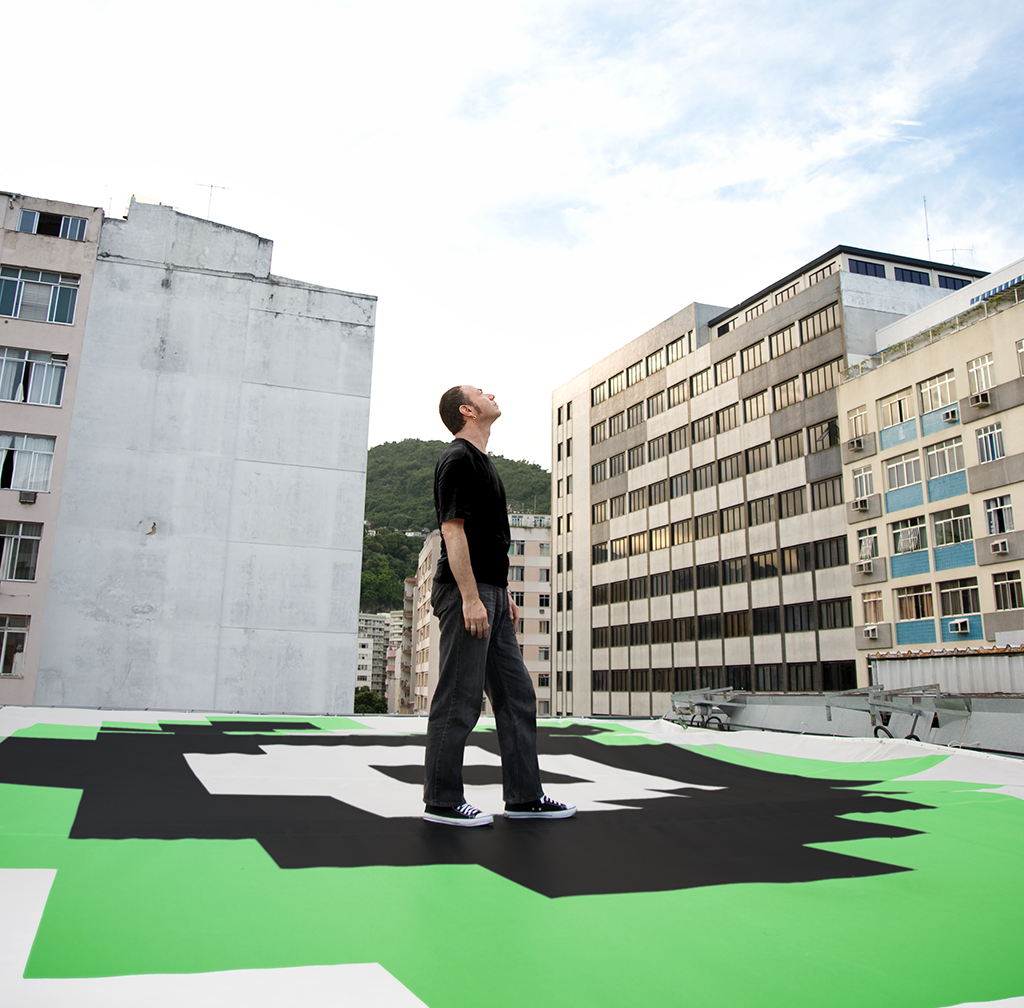
Eduardo Kac has been a pioneer in exploring the use of new technologies to create innovative poetic experiences. Experimenting with a range of technologies since the 1980s including fax, photocopiers, LED screens, the French videotext service Minitel, holography, conductive ink, and a variety of digital and network technologies. Kac’s distinctive body of work has been featured in exhibitions in New York, Paris, Rio de Janeiro, Madrid, Shanghai, Tokyo and many other venues. He has received the Golden Nica Award, the most prestigious award in the field of media arts and the highest prize awarded by Ars Electronica. This is his first solo exhibition in the United Kingdom.
Andrew Prescott, Professor of Digital Humanities at the University of Glasgow and Theme Leader Fellow for the ‘Digital Transformations’ strategic theme of the Arts and Humanities Research Council.
Furtherfield is an internationally renowned arts organisation specialising in labs, exhibitions and debate for increased, diverse participation with emerging technologies. At Furtherfield Gallery and Furtherfield Lab in London’s Finsbury Park, we engage more people with digital creativity, reaching across barriers through unique collaborations with international networks of artists, researchers and partners. Through art Furtherfield seeks new imaginative responses as digital culture changes the world and the way we live.
Furtherfield Gallery
McKenzie Pavilion
Finsbury Park, London, N4 2NQ
Visiting Information
About a year ago Eleanor Greenhalgh started her project The Dissolute Image (TDI), a speculative, poetic image hosting technique. By splitting images into individual pixels and distributing them, it enables banned content to be secretly posted on corporate social platforms. TDI enables users to post a single pixel on their own social media page. All the entries are tracked by TDI and each pixel will re-appear on a dedicated website, eventually re-forming the image. I asked Eleanor about her motivation and interest in censorship and hosting issues.
Annet Dekker (AD): Could you tell me a little bit about your background?
Eleanor Greenhalgh (EG): I did a fine art BA at Oxford Brookes in the UK where I started working on participatory projects. I consider myself somewhere between a curator and a facilitator, but it is a role that I haven’t quite worked out. From being involved in environmental activism, I became really fascinated by the way that these kinds of groups organized themselves. These were non-hierarchical groups that tried to avoid replicating the types of hierarchies which they’re opposing. It is a really fascinating process because it doesn’t always go so well.
AD: Could you give an example of such conflict?
EG: Facebook for example hides its ideological biases behind fluffy language of wanting to make it a community space that’s safe for everybody, so you’re not going to come across offensive material. Whereas you talk to an anarchist hosting collective, they will be honest and tell that they’re not hosting stuff that they disagree with, because they consider it part of their activism and they’re not going to give resources to a cause that they disagree with. So how does that relate to the demand for solidarity? It’s a recurring problem. If you believe in building some kind of alternatives, solidarity is essential. But where does your desire to show solidarity conflict with your own values, your own autonomy?
I think this is a source of deep ambivalence. On the one hand being autonomous, while at the same time being deeply vulnerable to the collective – whether relying on others to host your data, to back you up on a demonstration, or just look after each other on a very physical level. I want to expose this vulnerability, this ambivalence, which you find between the two extremes of total autonomy or total solidarity. Rather than choosing one of them, I’m interested in looking in the middle and asking, why is it that being in the middle is so uncomfortable, and why is there this temptation to flee to one of these two extremes?
AD: Why is being in the middle uncomfortable? Isn’t that the place that most people choose to be in?
EG: I think social life puts us in the middle, whether we choose it or not. To give an example from a campaign I’m involved with, for abortion rights: we use the rhetoric of ‘bodily autonomy’. Yet, this ‘autonomy’ relies upon medical care given by others. It can only exist because of other people. What’s uncomfortable about this fact is that it confronts us with our own vulnerability. The fantasy of an asocial autonomy is seductive (and dangerous); the idea that we could be self-sustaining, without the need to do politics.
AD: During your time at Piet Zwart Institute in Rotterdam you focused a lot on the issues of censorship and hosting, both in The Dissolute Image (TDI) and in Volunteer Hosts, where you asked people to physically host files which they didn’t know the contents of. What is your interest in hosting?
EG: I became interested in hosting from two angles. Firstly from a social angle, and the power dynamics of who hosts what and why. Secondly from a physical angle, the fact that data needs to live somewhere and our reliance on hardware and services that we don’t own and have little control over. I’m interested in how that relates to people who are trying to articulate an alternative. Also asking the question of whether hosting something is the same as endorsing it.
I have been watching for example the work that Freedom Box has been doing, developing a small server that you can carry with you. The emphasis is that this is on your body and it is in your house, which makes it harder to seize data because different laws apply when something is in your house. I am exploring or even arguing for the beauty of this kind of approach – the beauty of the continued need for physical space. Hakim Bey (who is good at rhetoric if not politics) said that ‘the question of land refuses to go away’. Meaning, if we want to build an alternative then it has to live somewhere – somewhere physical. And yes, that includes ‘the cloud’ – another rhetorical device which obscures this fact. I don’t think this need for embodiment is a weakness or an inconvenience, as feminists have long argued (Karen A. Franck’s early critique of virtual reality comes to mind). The fantasy of disembodiment – whether geographical, sexual, technological – usually serves those who want to avoid discussions of how these spaces and bodies are governed.
AD: What were the reactions of people on TDI?
EG: People found it really fun, which I didn’t expect. Although, the project is still in a very early stage so not many pixels have been adopted, and it’s not possible to see what the image is. If and when the image ever is completed I wonder how those people will feel, if they will retract their ‘vote’, or whether it will just be like so many other things online where you click OK and then you forget about it. But in the early stages people seem to be very engaged by it and they like this rhetoric of showing solidarity and being part of it.
AD: How did you select the image(s)?
EG: The question of motivation is what interested me in choosing an image, because its very easy to stand up and say, ‘I disagree with censorship’, for example, but I don’t think it is as simple as to censor or not to censor. By asking people to adopt part of an image I’m trying to ask them the question of where they draw their own limits. If they will host something purely in the name of solidarity, or if they need to know a little bit more about it before they are willing to give their resources or their endorsements to it. Without giving away too much, I have tried to choose images in such a way that they would challenge the audience, so that people who are likely to say ‘yeah that’s great, I’m against censorship’, would stop and think a little bit about what they are willing to give a platform to.
AD: What is the role of people who participate in your projects?
EG: The question I came up against with Volunteer Hosts was figuring out what the investment would be for the people participating in it, and also how to keep track of the files. Also would this count as an archive, if there is no way of tracking the files that have been put in it? I think that could be quite nice as a gesture: that you create an archive which then is scattered and you have no way of knowing whether these USB keys have just been immediately wiped and had put more interesting things on there, or whether people really have faithfully held on to them, and maybe that is where gathering feedback becomes really important. It seems quite important to know, although there is also a beauty maybe in not knowing and somehow just surrendering your files.
I’m trying to experiment with how much you can remove something from its context, where it still has enough meaning to be engaging. There is something for me really beautiful about single pixels of which you’ve really have no idea what it could be. TDI has over 95,000 pixels, so it is highly unlikely that this image will ever be completed and that’s obviously built into the design of the project itself. The fact that it would take so long, and take so many people, for me is a source of beauty. I think it can be fine to use a type of game-like mentality to engage people, if you get them to think about it. I think if you agree to participate in something without really knowing what it is, you are probably going to be quite interested in finding out what it is, as that thing is gradually emerging. It’s the inherent excitement of thinking you have a stake in something, and therefore perhaps it will affect you. It is fascinating to take a whole and break it into lots of tiny pieces, or take tiny pieces and bring them together.
AD: So your main interest is in the conversation or a discussion?
EG: Yes, I think it is important to have some form in which that conversation happens. I try to capture the reactions of people who participate in the things that I make. That is maybe part of my background in facilitation, and my interest in counselling. The truth of something is in the feelings that it provokes. It is in trying to find out what the subject position is, or feels like, of somebody who is called upon to transmit the content of other people. What are the investments in there, why would you do it? What are the dilemmas that they face? At what point will you stop doing it, or under what conditions? Would you either withdraw your agreement, or put more conditions on it?
I’d like to argue for the value of simply reflecting, but also acknowledging my stake in it as an individual. I feel I have to try and resist a pragmatic attempt to somehow merely utilize the information, or to identify it as an activist act; there doesn’t necessarily need to be an outcome. It can be quite uncomfortable to admit that maybe you don’t have all the answers, or maybe there are contradictions in your approach. I’m trying to get to that point where those anxieties and uncomfortable feelings sit.
AD: How do you relate that back to yourself, what is your role?
EG: I am heavily influenced by my training as a facilitator, using an anarchist model where the facilitator is not the boss or the chair of the meeting but they are really in service to the group. In this model there are two qualities needed by a facilitator: being assertive and being neutral. It is an immensely powerful way of thinking, that you could be really assertive in, for example, designing a project and setting boundaries (kicking out spammers, people who are dominating the group), but at the same time being completely neutral in a sort of psychoanalytic way, while looking at the content. Anything that comes in, you hold in that space. On the other hand it is a complete contradiction; how can you be assertive and yet also neutral? You are always making decisions about what counts as spam versus what counts as a valid input. Perhaps it is a parallel dilemma to the one I mentioned, between solidarity and autonomy. These are the difficult and interesting questions of doing radical politics. Or doing any kind of democracy. So, while it is contradictory in many ways, I have seen this technique of neutral facilitation being used to incredible effect, and it’s one that I adopt. I think not having the answers, not determining the outcome, and being vulnerable to other people are beautiful ethical positions.
—-
+ For more information about Eleanor Greenhalgh: http://eleanorg.org/
“Tweets in Space beams Twitter discussions from participants worldwide towards GJ667Cc – an exoplanet 22 light years away that might support extraterrestrial life. By engaging the millions of voices in the Twitterverse and dispatching them into the larger Universe, Tweets in Space activates a potent conversation about communication and life that traverses beyond our borders or understanding.”
Marc Garrett: Could you explain to our readers what ‘Tweets In Space’ is?
Scott Kildall and Nathaniel Stern: Tweets in Space is an art project — a networked performance event — which beams your Twitter messages to a nearby exoplanet that might support human-like, biological life. Anyone with an Internet connection can Tweet with the hashtag #tweetsinspace during the performance time, and their messages will be included in our shotgun blast to the stars. The performance is on September 21st, 20:30 – 21:00 Mountain Time (3:30 AM BST / London time).
MG: What was the motivation behind your current collaboration?
SK and NS: We found inspiration from various sources. First, in NASA’s Kepler mission, whose purpose is to discover planets in the “habitable” or “Goldilocks” zone. The project has found over 2000 exoplanets thus far, all of which are “not too hot, not too cold, but just right” for life as we know it. Scientists now estimate that there are at least 500 million planets like this in the Milky Way alone. Our conclusion: extraterrestrial life is almost certainly out there.
![The newly discovered planet is depicted in this artist's conception, showing the host star as part of a triple-star system. Image credit: Carnegie Institution / UCSC. [1]](http://www.furtherfield.org/wp-content/uploads/2012/09/planet_gj667cc.jpg)
“The latest discovery is at least 4.5 times bigger in size than Earth. Reportedly, the planet exists 22 lightyears away from Earth and it orbits its star every 28 days. The planet is known to lie, in what is being referred to as the star’s habitable zone. A habitable zone is a place where the existing conditions are just perfect for life sustenance. Astronomers, according to this report also suspect that the GJ667Cc may have been made out of earth-like rock, instead of gas.” [ibid]
Another source of great inspiration is how we use social media here on Earth. This is our second, large-scale, Internet-initiated collaboration. In 2009, we amplified the power structures and personalities on Wikipedia, and questioned how knowledge is formed on the world’s most-often used encyclopedia – and thus the web and world at large. Now, we are turning to the zeitgeist of information and ideas, feelings and facts, news and tidbits, on Twitter. The project focuses on and magnifies the supposed shallowness of 140-character messages, alongside the potential depth of all of them – what we say in online conversation, as a people.
We are directing our gaze, or rather tweets, via a high-powered radio telescope, towards GJ667Cc – one of the top candidates for alien life. It is part of a triple-star system, has a mass that is about 4 times that of Earth, and orbits a dwarf star at close range. GJ667Cc most certainly has liquid water, an essential component for the kind of life found on our own planet.
MG: Right from its early years when Jagadish Chandra Bose [2], pioneered the investigation of radio and microwave optics – science, technology and art have had strong crossovers. And it might be worth mentioning here that Bose was not only well versed as a physicist, biologist, botanist and archaeologist, he was also an early writer of science fiction. [3] Which, brings us back to ‘Tweets In Space’, wherein lies themes relating to science fiction, radio broadcasting (commercial, independent and pirate), wireless technology of the everyday via our computers, and ‘of course’ the Internet.
![J.C. Bose at the Royal Institution, London, 1897.[3]](http://www.furtherfield.org/wp-content/uploads/2012/09/JC-Bose-at-the-Royal-Institution-London-with-his-radio-equipment-The-date-is-1897.png)
But, what I want to pin down here is, where do you feel you fit in historically and artistically with other past and contemporary artists, whose creative art works also involved explorations through electromagnetic waves?
Scot Kildall: The work of JC Bose is incredible and what strikes me is that he eschewed the single-inventor capitalist lifestyle in favor of his own experiments. Isn’t this the narrative that artists (often) take and linked back in many ways to the open-source/sharing movement, rather than the litigious patent-based corporation? And it mirrors in many ways the reception of electromagnetic radiation as well. You can’t really “own” the airwaves. Anyone who is listening can pick up the signal. This comes back, as you point out, to the internet. Twitter is now, one of the vehicles, and, ironically entirely owned by a benevolent* corporation.
Nathaniel Stern: (Agreeing with Scott) and we can’t forget of course Nam June Paik, who played with naturally occurring and non-signal based electromagnetic fields to interfere with analogical signals (as well as the actual hardware) of tube televisions, and more. And of course, there have been other transmission artists, explored in depth by free103point9, among others. I think, like them and others, we are messing with the media, amplifying (figuratively and metaphorically) and intervening, pushing the boundaries of DIY and cultural ethico-aesthetic questions…
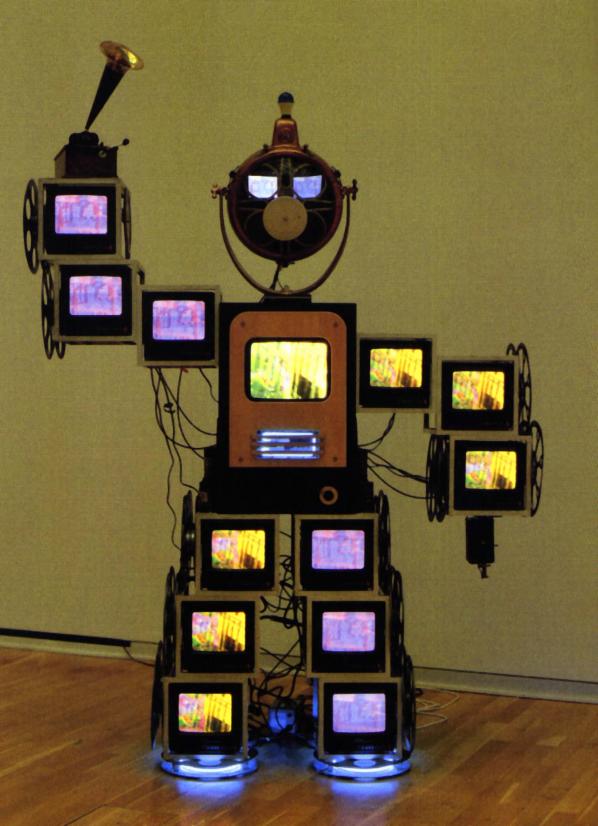
MG: What is especially interesting is that all the tweets submitted by the public are unfiltered. How important is it to you that people’s own messages are not censored when going into space?
SK and NS: Absolutely. Tweets in Space is by no means the first project to transmit cosmic messages with METI technologies (Messaging to Extraterrestrial Intelligence). Our fellow earthlings have sent songs by the Beatles, photos of ourselves shopping at supermarkets, images of national flags, and even a gold record inscribed with human forms – controversially, where the man has genitals and the woman doesn’t. These slices of hand-picked content exhibit what a select few believe to be important, but ignore, or willfully exclude, our varied and collective modes of thinking and being.
Tweets in Space is “one small step” with alien communications, in that it is open to anyone with an Internet connection. It thus represents millions of voices rather than a self-selected few. More than that, our project is a dialog. There have been, very recently, a small number of projects that similarly “democratize the universe” but none are like ours: uncurated, unmediated thoughts and responses from a cooperative public. We can speak, rebut, and conclude, and nothing is left out. Our transmission will contain the good, the bad, and the provocative, the proclamations, the responses, and the commentary, together, a “giant leap” for all of humankind – as well as our soon-to-be friends.
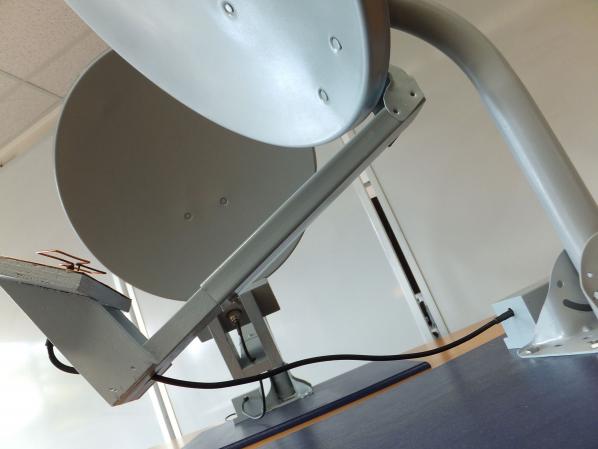
Furthermore, by limiting the event to a small window of only 30 minutes, we are encouraging all our participants to speak then respond, conversing with one another in real-time, through networked space. We are not just sending lone tweets, but beaming a part of the entire dialogical Twitterverse, as it creates and amplifies meaning. Tweets in Space is more than a “public performance” – it “performs a public.”
MG: Now, you will be transmitting real-time tweets toward the exoplanet GJ667Cc, which is 22 light-years away. How long will it all take to get there?
SK and NS: Well, first off, we’re collecting all of the tweets in real time, but only sending them out later in October. The main reason for this is that we have to wait for the planets to align – literally. We want line of sight with GJ667Cc from where our dish is. The added bonus of time, however, is that this will allow us to really flesh out how we send the messages in a bundle. We want to include a kind of Rosetta Stone, where we will not only send binary ASCII codes of text in our signal, but also analog images of the text itself. We additionally intend to choose the most frequently used nouns in all the tweets from our database, then give a kind of “key” for each. If “dog” is common, for example, we can transmit: 1. an analog image of a dog, like a composite signal from a VCR; 2. a text image of the word “dog” in the same format; and 3. the binary ASCII code for the word dog.
In terms of time/distance, when speaking in light years, these are the same thing. A light year is the distance light can travel in one year of Earth time (about 9.4605284 × 10 to the 15 meters). Since radio travels at the speed of light, a big dish on GJ667Cc will pick up the signal in 22 years. We should start listening for a response in 44 – though it may take them a while to get back to us…
MG: Will the code used for the project be open source, and if so, when and where can people expect to use it?
SK and NS: Yes it is! The most useful part of our code is the #collector, which saves real-time tweets to a database, that can then be used for live projections or web sites, or accessed and sorted later via all kinds of info. The problem is that it’s not really user friendly or out of the box – folks need a suped up server (VPN), and to plug into a few other open source wares. The main portion of the backend we used is actually already available at 140dev.com, and then we plugged that into Drupal, among other things. For now, we’re telling interested parties to contact our coder, Chris Butzen, if they want to use our implementation. And we hope to do public distribution on tweetsinspace.org if we are able to package it in a more usable format in the next 6 months.
MG: Are there any messages collected so far, grabbing your attention?
We’ve had thousands of tweets so far – even while just testing the ware in preparation for the performance. We’re anticipating a lot of participation! The tweets we’ve seen have ranged from variations on “hello [other] world” and “don’t eat us,” to political activism and negative commentary, to a whole surreal narrative of about 30 tweets per day over the last 3 months.
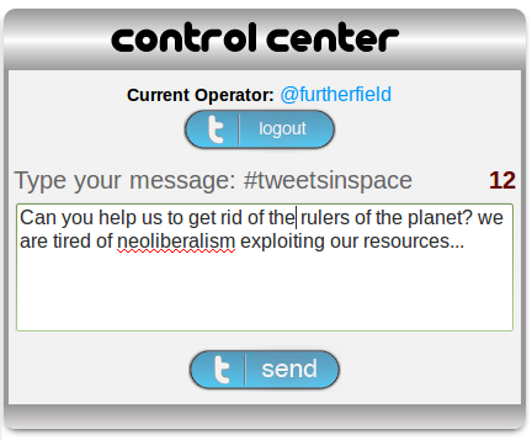
go to tweet aliens to add your own words…
Some of our favorite tweets have been those that question how to make our own world better. These speak to both the hope of space age-ike technology, as well as the hope in collective dialog – both of which our project tries to amplify. Such tweeters ask about the alien planet’s renewable energy sources, tax structures, education, art, and more.
We imagine the 30-minute performance will see a much more potent discussion about such things, and hope your readers will participate. The final transmission will be archived permanently on our site once we’ve prepared it for launch.
As part of the International Symposium on Electronic Art in New Mexico (ISEA2012). We will collect your tweets and transmit them into deep space via a high-powered radio messaging system. Our soon-to-be alien friends might receive unmediated thoughts and responses about politics, philosophy, pop culture, dinner, dancing cats and everything in between. By engaging the millions of voices in the Twitterverse and dispatching them into the larger Universe, Tweets in Space activates a potent conversation about communication and life that traverses beyond our borders or understanding. http://tweetsinspace.org/
AND THEY WILL BE SENT INTO DEEP SPACE!!!
Watch the stream LIVE here – http://tweetaliens.org/tweets/tweets.php
MADE REAL
an exhibition by Scott Kildall and Nathaniel Stern, the founders of Wikipedia Art.
Networks – social, political, physical and digital – are a defining feature of contemporary life, yet their forms and operations often go unseen and unnoticed. For this exhibition, Scott Kildall and Nathaniel Stern, artists and co-founders of Wikipedia Art, take these networks as their artistic materials and play spaces to create artworks about love, power-play and a new social reality.
Three works are shown for the first time in the UK: Wikipedia Art, a collaborative work “made” of dialogue and social activity; Given Time, an Internet artwork that creates a feedback loop across virtual and actual space; and Playing Duchamp, a one-on-one meeting and game between an absent artist and viewer/participant.
Free admission to exhibitions and events.
Wikipedia Art by Scott Kildall and Nathaniel Stern
‘if you claim something to be true and enough people agree with you, it becomes true.’ Steve Colbert on Wikiality
‘I now pronounce Wikipedia Art … It’s alive! Alive!’ Kildall and Stern
Scott Kildall and Nathaniel Stern famously used Wikipedia as an artistic platform, creating a collaborative project that explores and challenges our understanding of how knowledge is formed and disseminated. For over a year, they planned the initiation of Wikipedia Art, a socially generated artwork that exploits a feedback loop in Wikipedia’s citation mechanism. Here, a “word war” across blogs, interviews and the mainstream press, which involved Wikipedians, artists, journalists, lawyers and even the Wikimedia Foundation itself, continuously defined and transformed a work of art in much the same way that these categories define the discourses of the everyday.
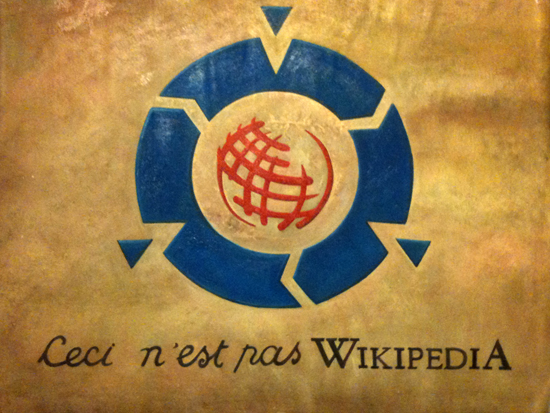
‘We ask our potential collaborators – online communities of bloggers, artists and instigators – to exploit the shortcomings of the Wiki through performance.’ Kildall and Stern
(Often unwitting) collaborators ‘performed’ the work through a debate about its aesthetic, conceptual and legal legitimacy in over 300 texts in over 15 languages on the Internet via blogs and forums such as Rhizome and Slashdot and in the press, including the Wall Street Journal and the Guardian UK.
This exhibition charts the inception, birth, life, death and resurrection of Wikipedia Art, which questions the authoritative role of Wikipedia. It reveals its fallibility whilst debating the control of access to and knowledge creation.
Wikipedia Art featured in the Internet Pavilion of the Venice Biennale 2009. In 2011 it was an awarded finalist at the Transmediale festival in Berlin.
Given Time by Nathaniel Stern
Furtherfield presents Stern’s polar projections of Second Life lovers. Second life is a 3D simulated and virtual world inhabited daily by thousands of people around the globe. To access Second Life, you must embody an avatar (a virtual human representation of yourself), seeing what they see through a computer screen. Stern places his lovers and us in a feedback loop between virtual and actual space.

In Given Time, two life-sized and hand-drawn avatars simultaneously stare longingly across their virtual pond and the real-world gallery floor. They hover in mid-air, almost completely still, supported by the gentle sounds of their breath, the wind blowing, and birds in the far-off distance. The viewer is both the observer and participant of this reciprocal relationship. Through the bodies and eyes of another, we see, look and are seen. Stern says: “Here, an intimate exchange between dual, virtual bodies is transformed into a public meditation on human relationships, bodily mortality, and time’s inevitable flow.”
Given Time was partly supported by the University of Wisconsin – Milwaukee and produced with the help of Jo-Anne Green and Bryan Cera.
Playing Duchamp by Scott Kildall
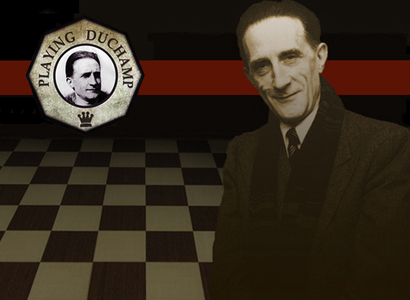
The American artist Scott Kildall, exhibiting for the first time in the UK, has fused the two worlds of art and chess in a homage to Marcel Duchamp, a chess master and artist recognised for shifting the paradigm of conceptual art. Using the recorded matches of Duchamp’s 72 tournament games, Kildall has modified an open-source chess engine to play chess as if it were Marcel Duchamp. By sitting down to this game of computer chess, visitors interact with the ghost of Marcel Duchamp, whose love for chess rivalled his attraction to art. Playing Duchamp is a 2010 New Radio and Performing Arts, Inc. commission for its Turbulence website.
Furtherfield invites you to come and play because, as Duchamp said: “The creative act is not performed by the artists alone”.
Playing Duchamp is a 2010 New Radio and Performing Arts, Inc. commission for its Turbulence website.
Going the distance for fine dining with global friends
In June, Furtherfield will host two telematic dinner parties to accompany this exhibition to create a co-presence dining experience with our remote friends mediated by digital technologies (network connections, projections, laptops and sonified objects). As food is the greatest mediator, we aspire to a satisfying remote connection through the frame of the dining experience.
Contact ale[at]furtherfield[dot]org for details on becoming a dinner guest.
Scott Kildall
Scott Kildall is a cross-disciplinary artist working with video, installation, prints, sculpture and performance. He gathers material from the public realm to perform interventions into various concepts of space.
Scott has a Bachelor of Arts in Political Philosophy from Brown University and a Master of Fine Arts from the School of the Art Institute of Chicago through the Art & Technology Studies Department. He has exhibited his work internationally in galleries and museums and received fellowships, awards and residencies from organisations, including the Kala Art Institute, The Banff Centre for the Arts, Turbulence.org and Eyebeam Art + Technology Center.
Scott is a founding member of Second Front — Second Life’s first performance art group. He is an artist-in-residence at Recology San Francisco. He currently resides in San Francisco.
More information: www.kildall.com
Nathaniel Stern
Nathaniel Stern (USA / South Africa) is an experimental installation and video artist, net.artist, printmaker and writer. He has produced and collaborated on projects ranging from interactive and immersive environments, mixed reality art and multimedia physical theatre performances to digital and traditional printmaking, concrete sculpture and slam poetry.
Nathaniel has held solo exhibitions at the Johannesburg Art Gallery, Johnson Museum of Art, Museum of Wisconsin Art, University of the Witwatersrand, University of Wisconsin-Milwaukee, and several commercial and experimental galleries throughout the US, South Africa and Europe. His work has been shown internationally at festivals, galleries and museums, including the Venice Biennale, Sydney Museum of Contemporary Art, International Symposium for Electronic Art, Transmediale, South African National Gallery, International Print Center New York, Milwaukee Art Museum and more. He is an Assistant Professor in the Department of Art and Design at the University of Wisconsin – Milwaukee.
More information: http://nathanielstern.com
Download Wikipedia Art: Citation as Performative Act (Creative Commons licensed)
by Scott Kildall and Nathaniel Stern, to be included as a chapter in ’ Wikipedia: Critical Point of View. Eds. Geert Lovink and Nathaniel Tkacz. Amsterdam: Institute of Network Cultures (University of Amsterdam), 2011. Forthcoming. Print.
Furtherfield, Unit A2, Arena Design Centre, 71 Ashfield Rd, London N4 1NY, +44 (0) 2088022827
Free admission to exhibitions and events -contact Alessandra Scapin ale[at]furtherfield[dot]org
“Ultimately there are only two basic states or basic phases and everything of interest takes place on the boundary between them: on the boundary between chaos and order, on the boundary of water and ice, on the boundary of finite and infinite computer process.” Tor Norretranders*
Kate Southworth and Patrick Simons have been creating audiovisual artworks, output in Shockwave, for exhibitions, projections at public gatherings of various kinds and for distribution across the Internet since the year 2000.
They live and work in Cornwall, under the name Glorious Ninth, which they describe as the space between their different approaches. Tor Norretranders, in his book, The User Illusion, tells us that when you have both ice and water in the same glass, complexity occurs at the transitional point between solidity and fluidity. It is on this boundary that really interesting things happen. By tracking back through the history of the evolution of human consciousness, he suggests that consciousness and culture both exhibit this common quality with matter.
Packet Switching is described by the artists as an encounter with the “liminal space between ocean and land, between emotions and thoughts, and between reality and virtuality”. It exists simultaneously in two forms, as an online work and, for the next two years, in physical space as part of the touring exhibition, net:reality. The first venue is 20/21 Gallery in Scunthorpe, in a deconsecrated church.
A fine mesh screen of 4′ x 5″ is suspended in the nave of the church, above visitors’ heads, with a moving image back-projected onto its surface so that it can be seen from both sides. The audio plays from speakers situated on the floor on either side of the screen forming a triangle measuring about 18 feet, on each side. The sound creates a focal point that positions the viewer in front of the work. The moving black and white image consists of a cascading repeated text “we learn to love within the womb” which ebbs and flows in waves from the top of the screen over a series of images, abstracted through the application of image filters. Unlike the Internet version of this piece, that allows the viewer to “enter” the work at the “beginning”, in the physical space one is never sure how close one is to the start or the end of the 37 minute cycle. This sets the work in infinite time-space.
Online, some minimal colour is introduced and the first image, a flickering (wild open) eye, fills the screen for a number of minutes before being obscured by the text. This image strongly influences the way in which one experiences the rest of the work. The eye is eventually replaced by increasingly subtle imagery: of foliage, of the sea against the rocks, solarised, in negative. These are in turn masked by text which flows and drags across it like black oil across glass. Combining the visual qualities of an all-over, expressionist painting and a long film loop, it is a continuously moving, pulsing abstraction.
The sound track is created from a series of field recordings. We hear a collection of mixed sounds, many of which are produced by walking: foot-fall, clothes brushing against clothes, ambient reverberations from coastal walks. The raw sound is cut, layered and serialized to suggest the whooshing rhythms of the sea or the ocean, even a locomotive train, in an imaginative recycling of the sounds of natural and mechanical motion that exist in the artists’ everyday locality.
Imagine sitting on the rocks on a beach in Cornwall, together with a friend or lover. Surveying the shapes and rhythms where waves repeatedly meet the slopes of a beach- the ocean, alive, resonating its presence, you watch the chaotic coordination of dancing droplets, spraying and dragging shells and varied life forms across the surface of the sand. Here, the longer and more closely you observe, the more strongly you can recognise the complex audiovisual, phasing patterns that evolve in Packet Switching.
Southworth and Simons create the audio and the visual elements of the piece independently. They negotiate the content, structure, texture and the feel of the work through conversations and by creating collaboratively drawn spider diagrams. Neither strand of the work is there to illustrate or to constrain the other. One might expect this process to lead to either long periods of disjunction in the work or to an undifferentiated sameness in the relationship between audio and visual tracks. But instead it offers a demonstration of the inevitable emergence of a new complex strand arising from the dynamic interaction between established, distinct forms.
This work does not reflect one individual’s internal psychology or singular skill, but declares the artists’ mutual way of working as two individuals, exploring their experience of the world, between and around them. In the current theoretical debates surrounding media art practice there is a growing interest in the potentials of digital media to facilitate collaboration. These can range from the abstract to the ideological and claim to do some of the preparatory work for artists- to create the field. Packet Switching is an explicit examination and imaginative response to love, landscape and liminal space; rather than relying on already constructed theories or prescription it develops through process as an actual manifestation of collaborative creativity.
*The User Illusion: Cutting Consciousness Down to Size by Tor Norretranders
Published 1991 (in Danish), 1994 in English by Penguin Books
NET:REALITY is a touring exhibition
currently on show at 20-21 Visual Arts Centre, Scunthorpe, UK”